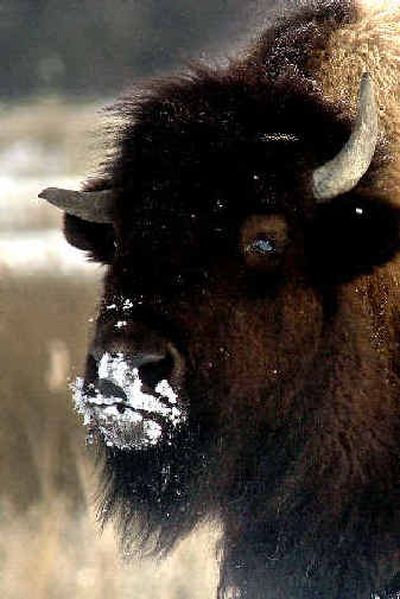Interior, tribes will share refuge management

The only federal wildlife refuge set aside to protect bison — the American buffalo — will be managed by the Interior Department and Indian tribes in an unusual partnership that conservationists fear could lead to more development of public lands.
Under an agreement signed Wednesday, the department and the Confederate Salish and Kootenai Tribal Council will split the budget and management duties for Montana’s 19,000-acre National Bison Range, which is within the tribal homeland on the Flathead Indian Reservation.
Training is to be provided to the tribes, which first must consult a federal manager with Interior’s Fish and Wildlife Service before waiving any regulations on the range. The deal takes effect in three months if Congress does not object.
The agreement, negotiated over the past two years, is only the second of its kind under a 1994 law that allows Indian tribes with a cultural, geographic or historic link to a federal refuge apply to run it.
An April deal let the Council of Athabascan Tribal Governments do a few jobs on the 9 million-acre Yukon Flats National Wildlife Refuge, which is about 100 miles north of Fairbanks, Alaska.
A bill by Sen. Daniel Inouye, D-Hawaii, would require more tribes nationally to manage resources on refuges with the government.
Jonathan Windy Boy, a Democrat who represents Rocky Boy Reservation in the Montana Legislature, led a prayer for the Bison Range agreement, after noting that his Indian name translates to “Old Man Buffalo.”
“The buffalo and bison have been a main staple of our people,” he said.
Assistant Interior Secretary Craig Manson said the deal creates “a partnership that honors some of the most valued natural resources that we share on this continent.”
Opposition to the deal could come from Sen. Conrad Burns, R-Mont., chairman of the Senate Appropriations Committee’s interior subcommittee.
Visitors to the Bison Range pay a $4 entrance fee and are told the bison roaming the prairie are descended from calves that followed an Indian home from a hunt more than a century ago.
About 250,000 people visit the range in western Montana annually. Birds, elk, bighorn sheep and pronghorn antelope call it home.
Opponents questioned whether tribal employees are qualified to run a refuge and said they fear the deal might become a model for opening more refuges and other public lands to more energy exploration.
“Based on the number of refuge managers I’ve heard from, this is unbelievably far-reaching,” said Susan Campbell Reneau of Missoula, the author of 21 books on wildlife and conservation. “It could be applied to all other public land where there is commercial application, including oil and gas exploration in Alaska.”
More than 120 Fish and Wildlife retirees signed onto a letter last month from Public Employees for Environmental Responsibility, an advocacy group, asking Interior Secretary Gale Norton to postpone the agreement.
Managing the range now takes a $1.7 million budget and 18 full-time workers.
The refuge was created in 1908 on Indian land the government bought to save the bison from extinction. The tribes also have worked with the federal government to reintroduce peregrine falcons and trumpeter swans to the reservation.